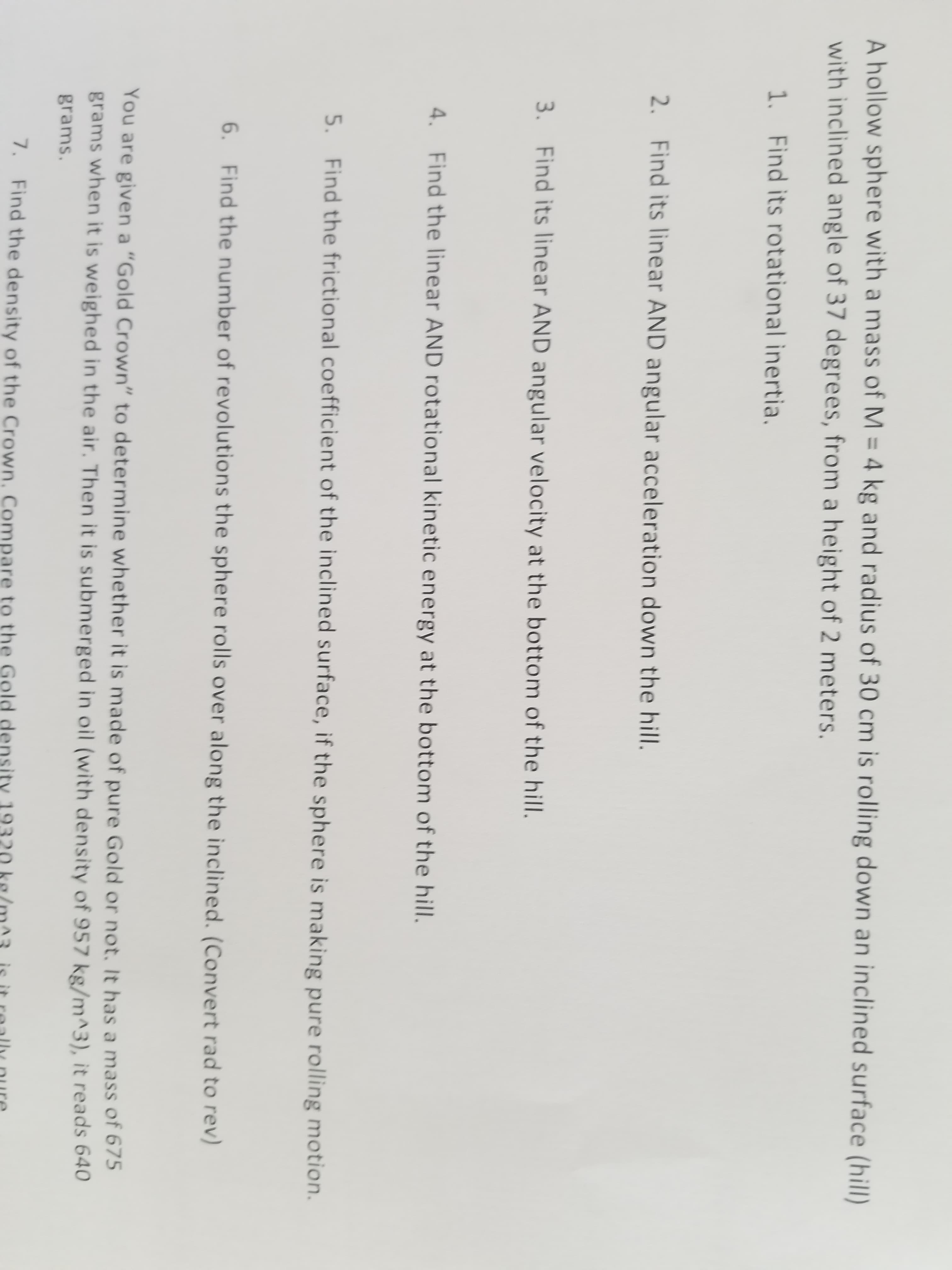A hollow sphere with a mass of M 4 kg and radius of 30 cm is rolling down an inclined surface (hill) with inclined angle of 37 degrees, from a height of 2 meters. 1. Find its rotational inertia. 2. Find its linear AND angular acceleration down the hill. 3. Find its linear AND angular velocity at the bottom of the hill. 4. Find the linear AND rotational kinetic energy at the bottom of the hill. 5. Find the frictional coefficient of the inclined surface, if the sphere is making pure rolling motion. 6. Find the number of revolutions the sphere rolls over along the inclined. (Convert rad to rev) You are given a "Gold Crown" to determine whether it is made of pure Gold or not. It has a mass of 675 grams when it is weighed in the air. Then it is submerged in oil (with density of 957 kg/m^3), it reads 640 grams. 7. Find the density of the Crown. Compare to the Gold
Kinematics
A machine is a device that accepts energy in some available form and utilizes it to do a type of work. Energy, work, or power has to be transferred from one mechanical part to another to run a machine. While the transfer of energy between two machine parts, those two parts experience a relative motion with each other. Studying such relative motions is termed kinematics.
Kinetic Energy and Work-Energy Theorem
In physics, work is the product of the net force in direction of the displacement and the magnitude of this displacement or it can also be defined as the energy transfer of an object when it is moved for a distance due to the forces acting on it in the direction of displacement and perpendicular to the displacement which is called the normal force. Energy is the capacity of any object doing work. The SI unit of work is joule and energy is Joule. This principle follows the second law of Newton's law of motion where the net force causes the acceleration of an object. The force of gravity which is downward force and the normal force acting on an object which is perpendicular to the object are equal in magnitude but opposite to the direction, so while determining the net force, these two components cancel out. The net force is the horizontal component of the force and in our explanation, we consider everything as frictionless surface since friction should also be calculated while called the work-energy component of the object. The two most basics of energy classification are potential energy and kinetic energy. There are various kinds of kinetic energy like chemical, mechanical, thermal, nuclear, electrical, radiant energy, and so on. The work is done when there is a change in energy and it mainly depends on the application of force and movement of the object. Let us say how much work is needed to lift a 5kg ball 5m high. Work is mathematically represented as Force ×Displacement. So it will be 5kg times the gravitational constant on earth and the distance moved by the object. Wnet=Fnet times Displacement.
4 5 and 6

Trending now
This is a popular solution!
Step by step
Solved in 2 steps with 2 images







